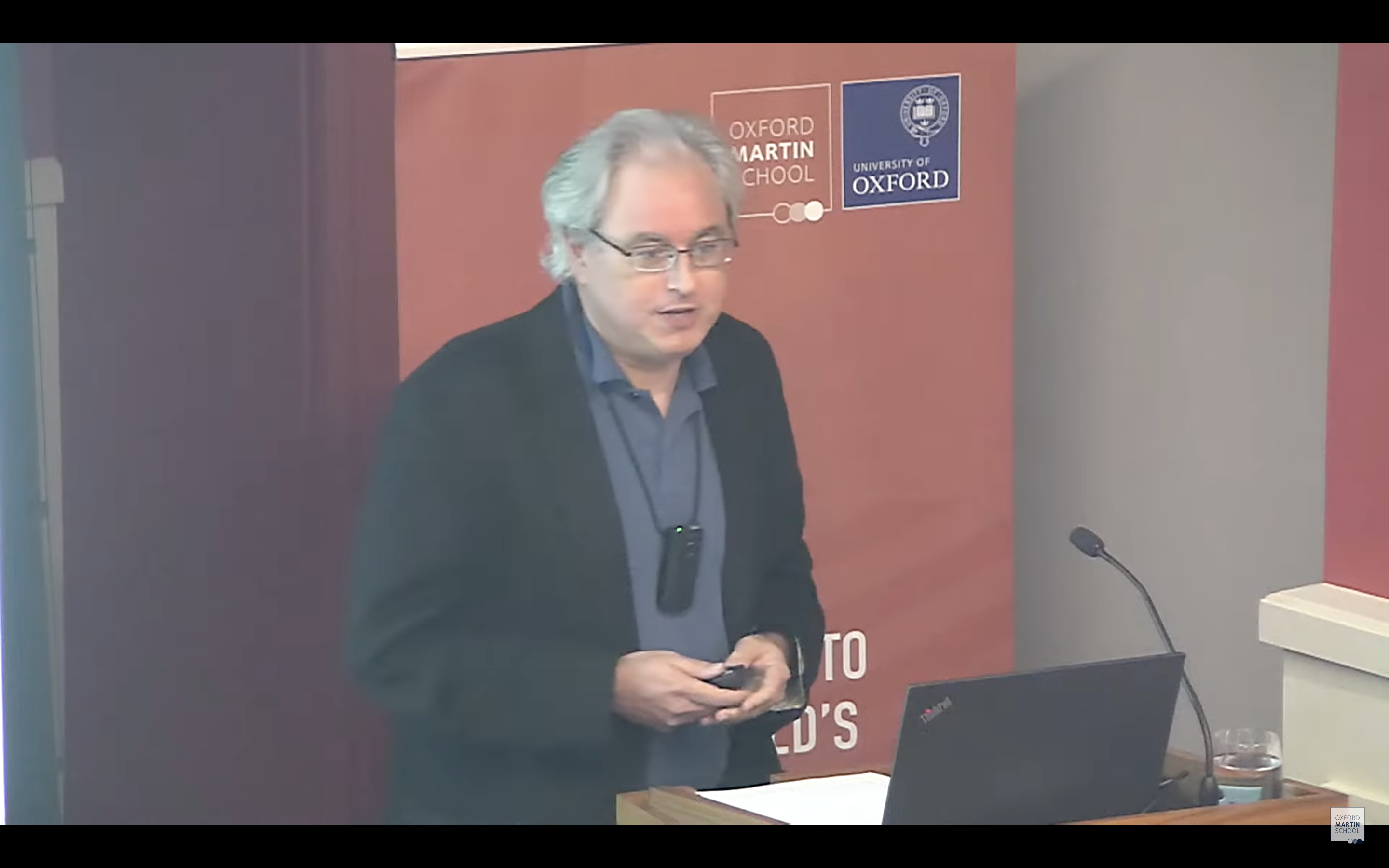If you’ve followed the news the last few days, you know that there is a migrant caravan approaching the US border, 7000-people strong. But who are these people, why have they left Central America, and what do they want once they cross the border?
The United States has responded over the years with a mix of rhetoric (to build a wall along the entire border) and enforcement responses (such as increased US border officials and increasingly advanced technology), and some policy action. The caravan is one of many signs that the US responses thus far to Central American migration have been far from sufficient.
The reality is that people will move if they need to move. If conditions are dire enough or prospects hopeless enough in one’s home country, she will migrate to safety and security (personal, economic, or otherwise) so long as she has the economic and network means to do so.
This isn’t just about economy, and often it’s not about jobs at all. Last week, President Donald Trump said, “I’ve caused the problem [of increased immigration]...I have created such an incredible economy, I have created so many jobs...that everybody wants to come in.” Putting aside that inflows are comparable with previous years, the types of migration we’re seeing—family units in particular—are likely for reasons other than jobs and the economy.
The violence is a critical issue that drives the migration decision for the Central American migrants currently arriving.
What drives unauthorized migration isn’t just the destination country’s economy, but also includes these five interrelated factors:
-
the lack of availability of regular (legal) migration pathways
-
economic conditions and interventions in the home community
-
enforcement at the border of and inside the destination country
-
demographic realities in the home community, and
-
violence in the home community
How big a factor is violence?
CGD’s research on unaccompanied child migration from Central America lays out the relationship between economic factors, violence, and the propensity to move. Unaccompanied child migrants apprehended at the US border between 2011 and 2016 moved due to a roughly equal mix of economic conditions and violence in their communities.
And violence weighed heavily. The numbers show that every 10 additional homicides in the Northern Triangle caused more than six additional unaccompanied child migrant apprehensions in the United States. Violence and unemployment in Central America’s Northern Triangle together are in fact so severe that a full 10 percent of some age cohorts in the Northern Triangle left within just a few years.
So what should we do about it?
Of the five factors that play into the migration decision, violence is the one issue for which we have policies proven to help in some measure: effective security assistance interventions, by the United States, that help reduce the same violence that drives Central Americans to head for the US border. In fact, preserving this security aid in Central America is the policy decision that matters most. Cutting off most or all aid to Guatemala, Honduras, and El Salvador would be the most counterproductive and harmful policy decision at this moment if the goal is preventing unauthorized immigration to the United States.
This is to say nothing of the four other factors. Evidence from US history with the Bracero program shows that enforcement alone is a much less effective deterrent of irregular migration than enforcement combined with enhanced lawful channels. When the regular migration option for Mexican agricultural workers to the United States was abruptly ended, irregular migration shot up and helped create the political crisis surrounding irregular migration that the United States continues to grapple with today.
Demographics are inevitable. Some degree of migration will happen. It is not a question of if, but rather how it will happen. Policy choices can shape how migration happens—via regular, formal channels, or irregularly and in the shadows. Policy choices will dictate whether that migration is a benefit to the United States or not. The effects of migration are not inherently good nor inherently detrimental. The impact on the US economy, jobs, and local communities comes down to the longer-term decisions by policymakers on how they want to govern and shape migration.
But the short-term violence interventions and security cooperation can have immediate effects on the whether Central Americans migrate to survive. Cutting off current US security cooperation and related aid will have the opposite effect of what is intended.
Si ha seguido las noticias durante los últimos días, sabe que hay una caravana de migrantes que se acerca a la frontera de los EE. UU., con 7000 personas. Pero ¿quiénes son estas personas? ¿Por qué se han ido de Centroamérica y qué quieren una vez que cruzan la frontera?
Los Estados Unidos han respondido a lo largo de los años con una mezcla de retórica (construir un muro a lo largo de toda la frontera) y respuestas de aplicación (como el aumento de los funcionarios fronterizos de los Estados Unidos y la tecnología cada vez más avanzada) y algunas medidas políticas. La caravana es uno de los muchos signos de que las respuestas de los EE. UU. a la migración centroamericana hasta ahora no han sido suficientes.
La realidad es que las personas se moverán si necesitan moverse. Si las condiciones son lo suficientemente peligrosas o las perspectivas son lo suficientemente desesperantes en el país de origen, ellas migrarán por seguridad y protección (personal, económica o de otro tipo) siempre que tengan los medios económicos y contactos para hacerlo.
Esto no se trata solo de economía, y a menudo no se trata en absoluto de empleos. La semana pasada, el presidente Donald Trump dijo: "He causado el problema [del aumento de la inmigración] ... he creado una economía tan increíble, he creado tantos empleos que todos quieren entrar". Dejando a un lado que los flujos son comparables con los años anteriores, los tipos de migración que estamos viendo, en particular las unidades familiares, son probablemente por razones distintas a los empleos y a la economía.
La violencia es un tema crítico que impulsa la decisión de emigración de los migrantes centroamericanos que llegan actualmente.
Lo que impulsa la migración no autorizada no es solo la economía del país de destino, sino que también incluye estos cinco factores interrelacionados:
-
la falta de disponibilidad de vías de migración regulares (legales)
-
condiciones económicas e intervenciones en la comunidad de origen
-
el control fronterizo y dentro del país de destino
-
realidades demográficas en la comunidad de origen, y
-
violencia en la comunidad de origen
¿Qué tan importante es la violencia?
La investigación del CGD sobre la migración infantil no acompañada desde América Central expone la relación entre los factores económicos, la violencia y la propensión al movimiento. Los niños migrantes no acompañados detenidos en la frontera de los Estados Unidos entre 2011 y 2016 se mudaron debido a una combinación similar de condiciones económicas y de violencia en sus comunidades.
Y la violencia pesaba mucho. Las cifras muestran que cada 10 homicidios adicionales en el Triángulo del Norte causaron más de seis detenciones adicionales de niños migrantes no acompañados en los Estados Unidos. La violencia y el desempleo en el Triángulo del Norte de América Central son de hecho tan severos que un 10 por ciento de algunas franjas etareas en el Triángulo del Norte se fueron en tan solo unos años.
Entonces, ¿qué debemos hacer al respecto?
De los cinco factores que entran en juego al momento de la decisión migratoria, la violencia es el único tema para el que tenemos políticas que han demostrado ayudar en cierta medida: intervenciones efectivas de asistencia de seguridad por parte de los Estados Unidos que ayudan a reducir la misma violencia que lleva a los centroamericanos a avanzar hacia la frontera de Estados Unidos. De hecho, mantener esta asistencia de seguridad en Centroamérica es la decisión política que más importa. Cortar la mayor parte o toda la ayuda a Guatemala, Honduras y El Salvador sería la decisión de política más contraproductiva y perjudicial en este momento si el objetivo es impedir la inmigración no autorizada a los Estados Unidos.
Esto no dice nada sobre los otros cuatro factores. La evidencia de la historia norteamericana con el programa Bracero muestra que la aplicación por sí sola es un elemento disuasivo mucho menos eficaz de la migración irregular que la aplicación combinada con canales legales mejorados. Cuando finalizó bruscamente la opción de migración regular para los trabajadores agrícolas mexicanos a los Estados Unidos, la migración irregular se disparó y contribuyó a crear la crisis política que Estados Unidos sigue enfrentando en la actualidad.
La demografía es inevitable. Algún grado de migración ocurrirá. No se trata de si sucederá, sino de cómo sucederá. Las opciones de políticas pueden determinar cómo la migración tiene lugar, a través de canales regulares, formales o de forma irregular y en la sombra. Las opciones de políticas determinarán si esa migración es un beneficio para los Estados Unidos o no. Los efectos de la migración no son intrínsecamente buenos ni perjudiciales. El impacto en la economía, los empleos y las comunidades locales de los Estados Unidos depende de las decisiones a largo plazo de los responsables políticos sobre cómo quieren gobernar y configurar la migración.
Pero la intervención de violencia y la cooperación de seguridad a corto plazo pueden tener efectos inmediatos sobre si los centroamericanos migran para sobrevivir. Interrumpir la cooperación actual de seguridad de los EE. UU. y la asistencia relacionada tendrá un efecto contrario de lo pretendido.
Disclaimer
CGD blog posts reflect the views of the authors, drawing on prior research and experience in their areas of expertise. CGD is a nonpartisan, independent organization and does not take institutional positions.





